Charleston Currents #11.42 | Sept. 9, 2019
BEAUTIFUL DAWN. Nature’s fury of howling wind and rain on Thursday from a hurricane provided with this awe-inspiring contrast: “Sunrise on the harbor the day after Dorian,” former reporter Prentiss Findlay wrote after taking this amazing photo. Wow. Simply, wow.
 FOCUS: Bluffton legislator ferries supplies to decimated Bahamas
FOCUS: Bluffton legislator ferries supplies to decimated Bahamas
COMMENTARY, Brack: Give local governments, utilities a pat on the back
IN THE SPOTLIGHT: Morris Financial Concepts, Inc.
GOOD NEWS: Student award renamed to honor civil rights activist Jim Campbell
FEEDBACK: On the importance of The 1619 Project, more
MYSTERY PHOTO: We know where it is, but what is it?
S.C. ENCYCLOPEDIA: Hurricanes in South Carolina through Hugo
CALENDAR: Keb’ Mo’ Solo set for Sept. 19 at Gaillard
FOCUS: HELPING AFTER DORIANBluffton legislator ferries supplies to decimated Bahamas
By Andy Brack, editor and publisher | Bill Herbkersman wanted to do something to make a difference after Hurricane Dorian. So he got some disaster relief supplies and flew them to Treasure Cay, part of the decimated Abaco Islands of the Bahamas.
A seasoned developer and Republican state representative from Bluffton, Herbkersman made two roundtrips Sunday, each leg of which is about 90 minutes. He plans to make three trips daily for most of the rest of the week. On each trip, his Cessna 182 single-engine plane, which he describes as a “Suburban with wings,” can haul about 1,100 pounds of whatever he can get — water, food, disinfectants, cleaning supplies and medical supplies, such as stethoscopes, gloves and medicine.
“They need every thing over there,” he said Sunday night from a staging base in Fort Pierce, Fla. “The people who are doing triage over there said they can really use baby powder and those bottles with bubbles in them for kids so they can keep the kids’ minds off of what happened. … Even a book club can get a case of baby powder.”
Normally, the islands offer beautiful air-to-sea views of deep blue water surrounding lush green islands. Sunday’s visit looked vastly different, Herbkersman said. The islands were black from all of the dead vegetation.
“When you land, you smell the death when you get out,” he said.
Herbkersman’s journey started Saturday when he loaded up some supplies in Bluffton and flew to Charleston, where he took on more relief material from MUSC and longtime friend and state Sen. Sandy Senn, a Charleston Republican who has some property and connections to Abaco. Then he flew to Fort Pierce before heading out early Sunday to ferry supplies.
Each round trip costs about $350 in fuel, which Herbkersman is covering. When asked how others can help, he suggested for people to donate to Mercy Flight, which he said is coordinating aid to be flown in by volunteer pilots who may not be able to cover their fuel. [Note: Mercy Flight confirmed today that it is coordinating aid.]
“It makes you feel good,” he said of his volunteer effort. “We’re all in this together. Those folks have absolutely nothing.”
Another way you can help
Mediterranean Shipping Company (MSC) Charleston confirmed today it is coordinating a shipment of relief goods to the Bahamas. The company will fill up a container, truck it to Port Everglades, Fla., and put it on a vessel directly to the Bahamas.
 Here is a list of items that you can take to send via MSC:
Here is a list of items that you can take to send via MSC:
Nutrition: Canned food, dry food, water, baby food
Personal supplies: Tarps, batteries (any size); toilet paper; paper towels; soap; mosquito repellent; hand sanitizer; wipes; female hygiene products; basic over-the-counter medications, such as Tylenol, Advil, aspirin.; first-aid kits.
Cleanup supplies: Mops, bleach, rags, cleansers like Pine-Sol, buckets, brooms, wipes, heavy-duty trash bags
WHERE: Drop off supplies at the MSC office, 700 Watermark Blvd. in Mount Pleasant, between 8 a.m. and 5 p.m. through Wednesday. The deadline is 5 p.m. Sept. 11.
Gianluigi Aponte, executive chairman and founder of MSC Group, said in a press release: “It is heart-breaking to see the impact and devastation that Hurricane Dorian has brought over the Bahamas and its population. The thoughts and prayers of my entire family are with the people of the Bahamas and their families and loved ones.
“As a family company and one that has lived off the sea for over 300 years, we are fully committed to supporting both immediate and longer-term relief and recovery efforts in the Bahamas. Our businesses have long been closely tied to the Bahamas and its people, with a rich history spanning over many decades. We now look forward to supporting their efforts to rebuild and recover in every way we can and through all our businesses.”
- Have a comment? Send to: editor@charlestoncurrents.com
BRACK: Give local governments, utilities a pat on the back
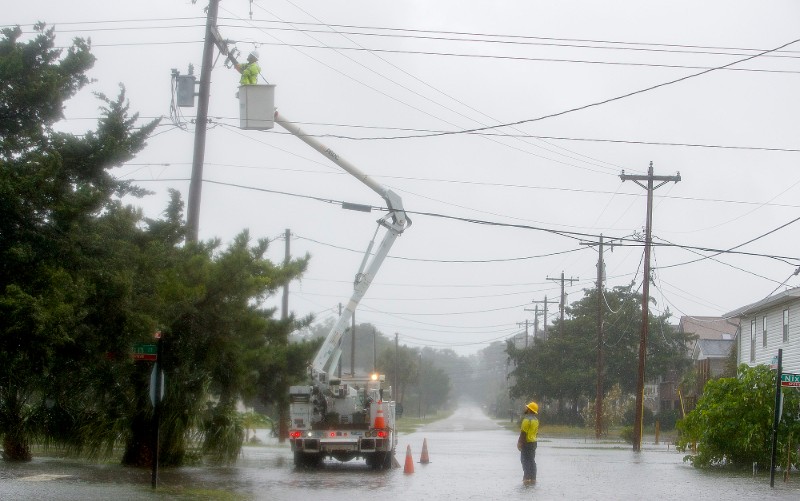
Santee Cooper linemen work to restore power after the brunt of Dorian passed. Photos Courtesy Santee Cooper. © All rights reserved.
By Andy Brack, editor and publisher | Two smells provide vivid memories of Hurricane Hugo.
The first came just after the storm as the resin scent of snapped pine trees filled a car during a drive along Interstate 26 toward Charleston. The air smelled like an open bottle of Pine-Sol. Days later, thanks to decomposing piles of leaves, molding carpets, rotting food and mildewed garbage, came the overwhelming stink of rot.
 Fresh and clean, followed by cloying decay.
Fresh and clean, followed by cloying decay.
So far, Dorian has left different impressions — the howl of hour upon hour of wind, the thrum of leaf blowers, the whine of chainsaws and the stench of burning leaves by some intrepid residents who must not have been able to abide by piles of yard waste on their streets.
Local governments and power companies have gotten down the drill of managing an effective aftermath of a storm. For their quick, solid action, local governments and utility crews deserve a big pat on the back.
Within two days, 99 percent of everyone who lost power had it back. In Charleston County where more than 100,000 of Dominion Energy’s customers lost electricity, only 900 didn’t have power early Sunday.
“By far, the number one reason for outages throughout this event was damage from trees and tree limbs,” said Dominion Energy spokesman Paul Fischer, who added the company had more than 2,800 company employees and contractors working to deal with downed trees and restore power.
For Santee Cooper, which supplies power for areas in Georgetown and Horry counties, the Thursday storm knocked out power to about 47,000 commercial and residential customers, 95 percent of whom had power restored by 3 p.m. Saturday. Some 65 out-of-area crews joined Santee Cooper’s employees to get the lights back on.
Local governments were busy too, not only with preparing for the storm but promptly dealing with the aftermath.
By Saturday afternoon, the city of Charleston’s crews removed more than 100 loads of debris, cleared 138 downed trees and got all but four traffic lights working.
“Garbage collection will return to its normal schedule on Monday,” according to a press release. “Due to the amount of storm debris, city trash crews will continue on an emergency debris-only trash schedule through at least the middle of the week. Normal trash collection will resume thereafter.”
To get the latest update for what’s happening in Charleston related to storm cleanup, you can phone the Citizen Services Desk at 843-724-7311 during normal business hours.. New GIS mapping tools allowing citizens to track hurricane-related information in real-time are also available on the city website.
In Charleston County, you can report damage using the Charleston County Damage Assessment website. Recycling crews are to resume operations today.
Andy Brack’s new book, “We Can Do Better, South Carolina,” is now available for $14.99 in paperback via Amazon.
- Have a comment? Send to: editor@charlestoncurrents.com
SPOTLIGHT: Morris Financial Concepts, Inc.
 The public spiritedness of our sponsors allows us to bring Charleston Currents to you at no cost to readers. Morris Financial Concepts, Inc. is a nationally recognized, fee-only financial consulting firm that helps you identify and align your resources, values and goals to achieve an enriched life.
The public spiritedness of our sponsors allows us to bring Charleston Currents to you at no cost to readers. Morris Financial Concepts, Inc. is a nationally recognized, fee-only financial consulting firm that helps you identify and align your resources, values and goals to achieve an enriched life.
We do not accept commissions or compensation related to the products and services we recommend. Our counsel is based solely on what we believe is best for each client.
- Learn about founder and Charleston Currents columnist Kyra Morris and more about the consultancy at: Morris Financial Concepts, Inc.
- To meet all of our underwriters, click here.
Student award renamed to honor civil rights activist Campbell
Staff reports | The College of Charleston’s Race and Social Justice Initiative at the Avery Research Center for African American History and Culture will rename its Student Leadership Award to honor James E. Campbell, a longtime civil rights activist, global educator and friend of the Avery Research Center.
According to a press release, the initiative’s Student Leadership Award is a commitment to promote student development through a $6,000 travel and research stipend divided among 10 student-leaders who recognize the importance of social justice activism. Inspired by the findings of the The State of Racial Disparities in Charleston County, South Carolina 2000–2015, a study conducted and published by initiative, the award funds students who are actively finding solutions for the pervasiveness of racial inequality and injustice within the Lowcountry, the South and the country at large.
Campbell, an African American educator and civil rights activist born in 1925, worked as a teacher in Baltimore, New York and Tanzania. He later became an administrator with the New York City public school system. Campbell also served as contributing editor for the journal Freedomways. Relocating to Charleston after retirement, he became a community activist and continued his involvement with educational initiatives. Throughout his life, Campbell has worked with organizations focused on socialism, Pan-Africanism, freedom struggles and equity in education. In dedicating the award in Campbell’s name, the initiative’sI leaders said they hoped his lifelong commitment to civil rights will inspire future agents of change.
Previously awarded to undergraduate and graduate students at the College of Charleston, the RSJI is expanding the award’s reach for 2019-20 by inviting applications from students from South Carolina’s six historically black colleges and universities (Claflin University in Orangeburg, South Carolina State University in Orangeburg, Benedict College in Columbia, Allen University in Columbia, Voorhees College in Denmark, and Morris College in Sumter.
Pendarvis seeks to make federal opportunity zones work better
By Lindsay Street, republished from StatehouseReport.comt | A state Democratic lawmaker wants to “supercharge” a new federal tax break aimed at fueling private investment — and subsequently, jobs, housing and business — in blighted areas.
The federal Opportunity Zones tax break has received criticism from national publications and tax policy experts who say it benefits the wealthy and promotes gentrification.
But S.C. Rep. Marvin Pendarvis of North Charleston sees a bright side. That’s because the federal tax break needs a state component to make it successful, he said.
“If what I propose gets introduced and passed, it changes lives tremendously,” said Pendarvis, a Democrat. Half of his district is in an opportunity zone that he said is plagued with drugs, crime, homelessness and hopelessness. “We’re facing some real-life challenges in these zones … We need to make sure the investment has a return for the people as well.”
Pendarvis wants to add a state-level tax break for developers, but with a caveat: There needs to be tangible community benefit — such as jobs, affordable housing or green space — from qualifying projects. He said his bill, which will be prefiled prior to the 2020 session, will also track investments and promote community input to help create transparency and accountability.
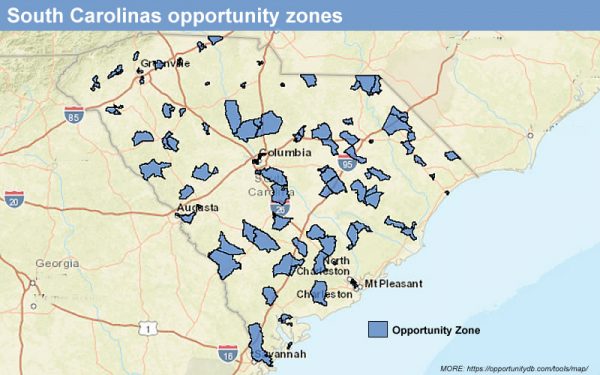 The Opportunity Zones program is a tax break established in the Republican-backed 2017 federal tax overhaul. The program received bipartisan backing from U.S. Sens. Cory Booker of New Jersey, a Democrat, and Tim Scott of South Carolina, a Republican.
The Opportunity Zones program is a tax break established in the Republican-backed 2017 federal tax overhaul. The program received bipartisan backing from U.S. Sens. Cory Booker of New Jersey, a Democrat, and Tim Scott of South Carolina, a Republican.
The program allows developers to use capital gains — profits made from other investments — and re-invest that money into real estate and projects in specified zones, typically identified as low-income. The capital gains-fueled investment then will be untaxed unless the developer withdraws his or her investment before 10 years.
The idea is to spur new housing, businesses and jobs. One estimate says there is $2 trillion in capital gains funding that could be invested into the zones. The Tax Foundation estimated the program would cost $1.6 billion in revenue from 2018 to 2027. There are no estimates on what it could cost state governments, like South Carolina, that have coupled the state tax code with the legislation.
The relative newness of the Opportunity Zones program and the lack of centralized data collection on investments has made judging the success of the program problematic, according to tax policy experts.
A yearlong study of the Opportunity Zones program by The New York Times was released Aug. 30. The analysis relied mostly on anecdotal evidence, and highlighted a number of problems with the federally encouraged investments. The story reported “the Trump administration’s signature plan to lift (America’s poorest areas) — a multibillion-dollar tax break that is supposed to help low-income areas — has fueled a wave of developments financed by and built for the wealthiest Americans.” Read more.
“We may never know how effective this program is. We’re going to be relying on anecdotal information,” Center on Budget and Policy Priority senior fellow Michael Mazerov said. In May, federal lawmakers, including Scott, introduced legislation to require reporting on the investments.
- Read the full story on the Opportunity Zones program.
- Have a comment? Send to: editor@charlestoncurrents.com
The 1619 Project, play tell stark truths about race
To the editor:
![]() I read every word of The New York Times’ compelling magazine issue containing The 1619 Project and wish everyone could have access to it. It was brilliant and deserves widespread dissemination.
I read every word of The New York Times’ compelling magazine issue containing The 1619 Project and wish everyone could have access to it. It was brilliant and deserves widespread dissemination.
I am so glad you brought this up for your readers. It is such a painful story. Another powerful testimony to the lasting impact of slavery is contained in Randy Neale’s brilliant play, Last Rites, on now at Pure Theatre [in Charleston]. Set in the midst of the Detroit riots of 1967, it uses three characters to show the gulf that divided and divides people and the rage that oppressed people feel, then and now. Randy Neale lived near Detroit at that time and has been haunted by the events then; his play, which runs for only a few more days, ought to be revived and shown elsewhere.
— Judy Hines, Charleston, S.C.
Keep it up
To the editor:
Thank you Andy for what you do at the state level, the county level, organizations and community levels, all the way down to S.C. citizen actions and behavior level. Please don’t stop.
— Albert Wiggins, Early Branch, S.C.
Send us your thoughts
We’d love to get your impact in one or more ways:
Send us a letter: We love hearing from readers. Comments are limited to 250 words or less. Please include your name and contact information. Send your letters to: editor@charlestoncurrents.com. | Read our feedback policy.
Tell us what you love about the Lowcountry. Send a short comment – 100 words to 150 words – that describes something you really enjoy about the Lowcountry. It can be big or small. It can be a place, a thing or something you see. It might the bakery where you get a morning croissant or a business or government entity doing a good job. We’ll highlight your entry in a coming issue of Charleston Currents. We look forward to hearing from you.
We know where it is, but what is it?
This week, we offer a different kind of mystery. Reader Katharine Beard of Camden knows where the above photo is. She just doesn’t know what it is.
“My husband and I have been passing this on our way from Camden to Edisto and have wondered about itm,” she wrote. “It is on Tee Vee Road near Elloree, S.C. We are hoping someone will enlighten us.”
Let us know at: editor@charlestoncurrents.com. And don’t forget to include your name and the town in which you live.
Our previous Mystery Photo
 Our Sept. 2 mystery, “Kicking back to watch a grand sunset,” was a place near and dear to the hearts of many in the Lowcountry: the iconic Bowen’s Island Restaurant along the Folly River near Folly Beach.
Our Sept. 2 mystery, “Kicking back to watch a grand sunset,” was a place near and dear to the hearts of many in the Lowcountry: the iconic Bowen’s Island Restaurant along the Folly River near Folly Beach.
We had lots of winning photo detectives last week, many of whom have likely enjoyed an adult beverage while eating tasty Bowen’s Island shrimp or oysters: Chris Brooks and Jeannie Hill, both of Mount Pleasant; Bud Ferillo and Jay Altman, both of Columbia; Jim McMahan, Stephen Yetman, Catherine LaFond, Legare Clement and Kristina Wheeler, all of Charleston; George Graf of Palmyra, Va.; Allan Peel of San Antonio, Texas; Chuck Boyd of Hanahan; and Marnie Huger of Richmond, Va. Thanks all!
Graf added this information for context, according to evepostbooks.com: “Steeped in unusual tradition, Bowen’s Island Restaurant is the quintessential seafood staple of the Lowcountry. Located 12 miles outside of Charleston, Bowen’s Island was established in 1946 by husband and wife Jimmy and Sarah May Bowen. Coming a long way since the restaurant’s formative years–when the eatery was only accessible by boat and had no signage to speak of–Bowen’s Island has transformed from hidden treasure to one of the most sought-out fish camps in the South. Following the death of Sarah May Bowen in 1990 and a massive fire that obliterated the building nearly a decade ago, Sarah May Bowen’s grandson and current owner Robert Barber refused to let its legacy fade; the iconic restaurant was rebuilt shortly after the blaze in 2006 and remains an optimum spot to enjoy one-of-a-kind “Lowcountry Boil,” housemade hush puppies and fresh-catch oysters.”
Peel added, “The restaurant is known for its no-frills service, creekside sunset views, graffiti-covered walls (where customers signed their names) and the oyster room (where steaming mollusks are shoveled directly from the fire pit onto rough wooden tables). The restaurant won a prestigious James Beard Foundation Award in 2006 when it was named one of eight “American Classic Restaurants” that “boasts timeless appeal and quality food that reflects the history and character of its community.” Owner Robert Barber accepted the award in New York City, wearing a tuxedo and white shrimping boots. Barber’s grandparents opened the restaurant in 1946 on the site of their original fish camp.
“Barber has certainly had his share of misfortunes. In October 2006, just 5-months after receiving the James Beard award, a fire gutted the original restaurant. It was rebuilt in 2007 and then in 2011, Barber had his family home burned to the ground from a fire that started with the clothes dryer. Then again in August 2012, a fire destroyed the catering kitchen, a building next to, but separate from, the main kitchen and restaurant. Thankfully the restaurant and kitchen were not damaged in the 2012 fire, and so the award-winning Bowens Island Restaurant remains a top spot for those seeking tasty oysters and gorgeous sunsets in the Charleston area.”
- Send us a mystery: If you have a photo that you believe will stump readers, send it along (but make sure to tell us what it is because it may stump us too!) Send it along to editor@charlestoncurrents.com.
HISTORY: Hurricanes in South Carolina up to Hugo
S.C. Encyclopedia | The term “hurricane” comes from the West Indian word “huracan,” which means “big wind” and is used to describe severe tropical cyclones in the Atlantic Ocean, Gulf of Mexico, Caribbean Sea, and the eastern Pacific Ocean. In the western Pacific, hurricanes are known as typhoons. The development of a hurricane requires an area of low pressure in a region of favorable atmospheric and oceanic conditions. Ocean temperatures must be near or greater than 80 ̊ F and wind speeds at mid- and upper-levels of the atmosphere must be light. At the center of the hurricane is the eye, a region of calm winds and subsiding air immediately surrounded by the most violent winds and precipitation called the eye wall. The counterclockwise rotation of cyclones in the Northern Hemisphere creates spiraling rain bands that span outward from the center. The outer rain bands of a hurricane, which can extend over an area 300 to 500 miles in width, contain the highest wind and heaviest precipitation away from the eye wall.
As the Northern Hemisphere summer approaches, more direct sunlight and longer daylight hours allow tropical oceans to warm sufficiently to support hurricane development. For that reason hurricane season runs from June 1 to November 30 each year in the Atlantic Ocean, Gulf of Mexico, and Caribbean Sea. During this time South Carolina is susceptible to land-falling tropical cyclones ranging in strength from tropical depressions (sustained winds less than 39 mph) to tropical storms (winds of 39 to 73 mph) and hurricanes (winds of 74 mph or higher). Hurricanes are classified into five categories using the Saffir-Simpson scale based on maximum sustained winds, minimum central pressure, storm surge, and damage. Between 1900 and 2004, fifteen hurricanes hit South Carolina directly, making the average landfall once every seven years. Three of the fifteen hurricanes have reached major hurricane status of category 3, 4, or 5 on the Saffir-Simpson scale. The average for any tropical storm or hurricane landfall in South Carolina is once every four to five years. Storms that make landfall along the Gulf of Mexico, Georgia, and North Carolina coastline often impact South Carolina as well. The primary threats from hurricanes in South Carolina include storm surge, high winds, rainfall-induced flooding, and tornadoes.
The storm surge develops as high winds pile up water ahead of hurricanes and low pressure near the center causes the sea level to rise. On September 22, 1989, Hurricane Hugo made landfall near Sullivan’s Island with a storm surge of twenty feet in Bulls Bay. Storm surge reports of ten to fourteen feet were reported along the entire coastline from Folly Beach to Myrtle Beach. The maximum sustained winds just before landfall in Hugo were estimated at 140 mph. The damage from Hugo was catastrophic with an estimated $10 billion damage from the Caribbean to the U.S. mainland. In South Carolina hurricane force winds were reported inland as far north as York County. Shaw Air Force Base in Sumter experienced winds of 66 mph with gusts to 108 mph. Thousands of acres in the Francis Marion and Sumter National Forest were destroyed.
Thirty years earlier Hurricane Gracie hit Beaufort on September 29, 1959, with 125 mph winds and gusts to 150 mph. The storm surge associated with Gracie was less severe than with Hugo since the hurricane made landfall within an hour of low tide. Rainfall amounts with Gracie totaled three to eight inches in South Carolina and flooding of streams and rivers occurred well inland along the Appalachian Mountains. The main threat from Hurricane Gracie was the high winds and potential for tornadoes. Damage in South Carolina reached an estimated $14 million, with more than half the amount in Charleston County alone. The preliminary report from the Hurricane Warning Center in Miami (now the National Hurricane Center) described the damage as “the worst from a hurricane in the history of Beaufort, South Carolina.” Ten deaths were attributed to the storm in South Carolina, primarily due to downed trees and power lines and automobile accidents.
With a forward speed of more than 30 mph and winds more than 130 mph, Hurricane Hazel moved inland near Little River at the border between North and South Carolina on October 15, 1954. Wind gusts were observed to reach 106 mph at Myrtle Beach where more than 170 miles of piers and beachfront property from the Grand Strand northward to near Wilmington, North Carolina, were destroyed. A seventeen-foot storm surge was responsible for $61 million in beach damages, with another $100 million reported inland due to flooding and high winds. Twenty people drowned due to rainfall-induced flooding across the Carolinas as ten to twelve inches of rain fell in the mountainous terrain.
Perhaps the most remarkable storm in South Carolina’s hurricane history occurred prior to 1900. Termed the “Great Storm of 1893,” the late-August hurricane made landfall along the southern coast with little or no warning. A tremendous storm surge and high winds were responsible for more than two thousand deaths.
— Excerpted from an entry by S.C. Climatology Office. This entry may not have been updated since 2006. To read more about this or 2,000 other entries about South Carolina, check out The South Carolina Encyclopedia, published in 2006 by USC Press. (Information used by permission.)
CALENDAR: Keb’ Mo’ Solo set for Sept. 19 at Gaillard
Staff reports | American blues musician Keb’ Mo’, who was born in California in 1951 as Kevin Roosevelt Moore, will show why he’s earned four Grammy Awards with a Sept. 19 performance at the Charleston Gaillard Center with music that often defies labels
It all took off for Keb’ Mo’ in 1994 with the self-titled release under his newly coined Keb’ Mo’ moniker. With 14 albums to his credit, he’s received 11 Grammy nominations, including Country Song of the Year for “I Hope,” co-written with The Dixie Chicks, and three alone for his 2014 self-produced release, BLUESAmericana including Americana Album of the Year.
Over the past two decades, Keb’ has cultivated a reputation as a modern master of American roots music through the understated excellence of his live and studio performances. Artists who have recorded his songs include B.B. King, Buddy Guy, the Dixie Chicks, Joe Cocker, Robert Palmer, Tom Jones, Melissa Manchester, Solomon Burke and the Zac Brown Band, to name a few.
He also has been featured in TV and film, playing Robert Johnson in the 1998 documentary “Can’t You Hear The Wind Howl,” appeared three times on the television series, “Touched By An Angel,” and was the ghostly bluesman Possum in John Sayles’ 2007 movie, “Honeydripper.” In early 2017, nine songs from Keb’s extensive catalog were featured in the film Signed, Sealed, Delivered: Higher Ground on the Hallmark Movies and Mysteries channel. This film was also Keb’s first feature film lead acting role
Keb’ Mo’ has been a long-time supporter of the Playing For Change Foundation, a nonprofit organization that creates positive change through music education. PFCF provides free music education to children in 9 countries, including Brazil, Bangladesh, Ghana, Mali, Nepal, Rwanda, South Africa and the United States, and has established 12 music schools around the world. In 2017, Keb’ Mo’ released TajMo, a collaborative album with the legendary Taj Mahal and included a tour for which Charleston was a stop.
Young multi-instrumentalist and blues tunesmith, Jontavious Willis is scheduled to open the show. Hailing from Greenville, Georgia, Willis grew up singing Gospel music at the Mount Pilgrim Baptist Church with his grandfather. At the age of 14, he reportedly came across a YouTube video of Muddy Waters playing “Hoochie Coochie Man” and was instantly hooked on the blues.
- The show starts at 7:30 p.m. Sept. 19. . Tickets are $25 to $69.
Check out these other awesome coming events at the Charleston Gaillard Center, 95 Calhoun St., Charleston:
Tom Segura’s “Take It Down Tour:” 7:30 p.m., Sept. 13. Actor, comedian and writer Tom Segura has quickly become one of Hollywood’s most in demand and highly regarded talents. He is best known for his three Netflix specials, Disgraceful (2018), Mostly Stories (2016), and Completely Normal (2014). Tickets are $32 to $78.
Theresa Caputo, Live: 7:30 p.m., Sept. 20. Therese Caputo, star of the hit TLC show, Long Island Medium, will share stories about her life and explain how her gift works. She will deliver healing messages to audience members and give people comfort knowing that their loved ones who passed are still with them, just in a different way. Tickets are $40 to $100.
Peppa Pig’s Adventure: 6 p.m., Sept. 24. Peppa Pig Live! is a new action-packed live show featuring your favorite characters as life-size puppets and costume characters. With lunch boxes packed and Daddy Pig driving the bus, Peppa and friends are excited about their outdoor adventure, full of singing, dancing, games and surprises! Tickets are $21 to $66.
Also on the calendar:
![]() CofC Piano Series: 7:30 p.m., Sept. 10, Emmett Robinson Theatre, 54 St. Philip St., Charleston. American pianist Johnandrew Slominski will open the 30th anniversary season of the College of Charleston International Piano Series. Slominski’s program will include an impressive body of repertoire featuring works by Liszt, Mozart, Brahms and Glass. General admission is $20 and FREE for College of Charleston students and employees. Tickets available online at go.cofc.edu/ips or at the door.
CofC Piano Series: 7:30 p.m., Sept. 10, Emmett Robinson Theatre, 54 St. Philip St., Charleston. American pianist Johnandrew Slominski will open the 30th anniversary season of the College of Charleston International Piano Series. Slominski’s program will include an impressive body of repertoire featuring works by Liszt, Mozart, Brahms and Glass. General admission is $20 and FREE for College of Charleston students and employees. Tickets available online at go.cofc.edu/ips or at the door.
Wine Down Wednesday: 5 p.m. to 7 p.m. Sept. 11, Old Towne Creek County Park, Old Towne Road, West Ashley. Charleston County Parks will kick off this fall series of four events to allow you to enjoy wine, food and live music in a new park. Admission is $15 in advance of $20 at the gate. Other dates are Sept. 25, Oct. 9 and Oct. 23. More info.
Sunday brunch series: 11 a.m. to 2 p.m., Sept. 15, Rose Pavilion in Hampton Park, 30 Mary Murray Drive, Charleston. The Charleston Parks Conservancy is hosting the fall series of Sunday Brunch in Hampton Park with food trucks and live music. Bring blankets and chairs to enjoy live music by local indie rock band Argot while relaxing in the park. Local food trucks Semilla, Lola’s Lumpia and Pita Stroller will have food available for purchase along with coffee from Independent Coffee Grounds and beer, wine and mimosas available for purchase from MIX Charleston. New this year, Create Your Own Mimosa Bar hosted by The West Edge. Advance tickets are $10. Tickets purchased at the door are $15. Free admission for children 12 and under.
The Reckoning: 1 p.m. to 5 p.m., Sept. 15, James Island County Park, James Island. The popular Grateful Dead tribute band returns to the county park in its off-leash dog park area. Beer and non-alcoholic drinks will be available for purchase, but no food is allowed into the dog park. Free with park admission of $2 per person. Dogs welcome, too!
Galivants Ferry Stump: 5 p.m., Sept. 16, Pee Dee Farms General Store, 125 West Highway 501, Galivants Ferry, S.C. Democratic presidential candidates will be vying for attention in a special edition of the nation’s oldest stump meeting in Horry County. Learn more here.
New citizens to be sworn in: 11 a.m. Sept. 19, Charles Pinckney National Historic Site, 1254 Long Point Road, Mount Pleasant. The site will host its 22nd Naturalization Ceremony as approximately 100 people from countries all over the world take the oath of citizenship during this ceremony. The event is free and open to the public.
Tribute to Aretha Franklin: 5 p.m., Sept. 28, Citadel Square Baptist Church, 328 Meeting St., Charleston. The Charleston Gospel Choir will present an encore performance of its sold-out April event, Queen of Soul and Gospel: A Tribute to Aretha Franklin, under the musical direction of guest conductor Dr. Jason A. Dungee. Tickets are $25 for adults and $10 for students. More: www.charlestongospelchoir.org or (866) 811-4111
Footloose, the musical: Through Sept. 28, Dock Street Theatre, Charleston. Charleston Stage will present the 1980s movie-turned-rock-and-roll musical for the first time in a month of performances sponsored by the Henry and Sylvia Yaschik Foundation. Tickets are $29 to $71 for any of the 16 performances of the show. Buy tickets.
North Charleston art show: Through Sept. 30, North Charleston City Gallery, Charleston Area Convention Center, 5001 Coliseum Drive, North Charleston. The show will feature mixed media works by Vik Hart of Charleston, and abstract paintings by Pascale Bilgis of Lexington.
Blue Jamboree: Day-long event, Oct. 5, The Bend, Azalea Drive, North Charleston. More than 2,000 tickets have been sold for this all-day event that will feature a broad array of Democratic presidential candidates. Sponsors of the event include these presidential candidates: Kamala Harris, Joe Biden, Bernie Sanders, Elizabeth Warren, Tom Steyer, Cory Booker, Andrew Yang, Pete Buttigieg, Michael Bennet, Tulsi Gabbard and Julian Castro. Learn more and find out about tickets.
Black Ink: 11 a.m. to 5 p.m., Oct. 5, Memminger Auditorium, 56 Beaufain St., Charleston. Black Ink, Charleston’s African-American book festival, will feature world-renowned poet and educator Nikki Giovanni as keynote speaker at 2 p.m. It is an exciting program of Charleston Friends of the LIbrary and a part of the MOJA Arts Festival. Cost: More info.
Early morning bird walks at Caw Caw: 8:30 a.m. every Wednesday and Saturday, Caw Caw Interpretive Center, Ravenel. You can learn about habitats and birds, butterflies and other organisms in this two-hour session. Registration is not required, but participants are to be 15 and up. $10 per person or free to Gold Pass holders. More: http://www.CharlestonCountyParks.com.
AREA MARKETS
TUESDAYS. The Mount Pleasant Farmers Market is every Tuesday from 3:30 p.m. to 7 p.m. at the market pavillion at Moultrie Middle School, 645 Coleman Blvd., Mount Pleasant. Free parking. Lots of activities. More info.
WEDNESDAYS. The West Ashley Farmers Market is every Wednesday from 3 p.m. to 7 p.m. in Ackerman Park off Sycamore Avenue in West Ashley. The last week of the market will be the first week of October. More.
FRIDAYS/SATURDAYS: Night Market. Every Friday and Saturday from 6:30 p.m. to 10:30 p.m. for the rest of the year, you can shop with 108 vendors, including artists and craftsmen, at the night market on Market Street between East Bay and Church streets. It’s more than four blocks of local shopping and fun. Free.
SATURDAYS: Johns Island Farmers Market operates each Saturday from 9:30 a.m. to 1:30 p.m. year-round with more than 50 local farmers and vendors, food trucks, music and more. The market is located on the campus of Charleston Collegiate School, 2024 Academy Road, Johns Island
SATURDAYS: The Charleston Farmers Market is open 8 a.m. to 2 p.m. in Marion Square each Saturday through Nov. 30. More info.
- If you have an event to list on our calendar, please send it to feedback@charlestoncurrents.com for consideration. The calendar is updated weekly on Mondays.
 If you like what you’ve been reading, how about considering a contribution so that we can continue to provide you with good news about Charleston and the Lowcountry. Interested? Just click the image below.
If you like what you’ve been reading, how about considering a contribution so that we can continue to provide you with good news about Charleston and the Lowcountry. Interested? Just click the image below.
OUR UNDERWRITERS
Charleston Currents is an underwriter-supported weekly online journal of good news about the Charleston area and Lowcountry of South Carolina.
- Meet our underwriters
- To learn more about how your organization or business can benefit, click here to contact us. Or give us a holler on the phone at: 843.670.3996.
OUR TEAM
Charleston Currents offers insightful community comment and good news on events each week. It cuts through the information clutter to offer the best of what’s happening locally.
- Mailing address: P.O. Box. 22261 | Charleston, SC 29413
- Phone: 843.670.3996
Charleston Currents is provided to you weekly by:
- Editor and publisher: Andy Brack, 843.670.3996
- Contributing editor, common good, Fred Palm
- Contributing editor, money: Kyra Morris
- Contributing editor, Palmetto Poem: Marjory Wentworth
- Contributing editor, real estate: Digit Matheny
- Contributing photographer: Rob Byko
SUBSCRIBE FOR FREE
Subscriptions to Charleston Currents are free.
- Click here to subscribe.
- Unsubscribe. We don’t want to lose you as a reader of Charleston Currents, but if you must unsubscribe, you will have to do it through the email edition you receive. Just go to the bottom of any of your weekly newsletters and click the “unsubscribe” function. If that doesn’t work, please send us an email with the word “unsubscribe” in the subject line.
- © 2008-2019, Statehouse Report, LLC. All rights reserved. Charleston Currents is published every Monday by Statehouse Report LLC, PO Box 22261, Charleston, SC 29413.



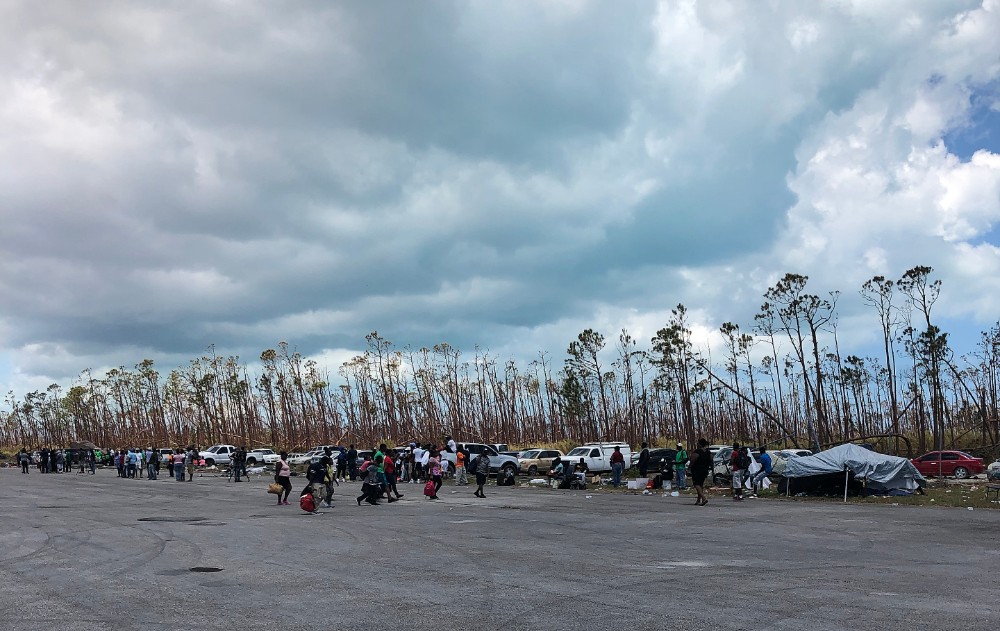
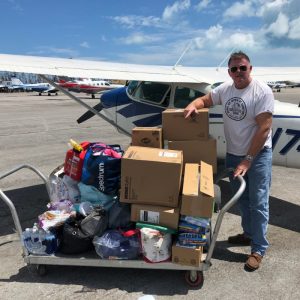
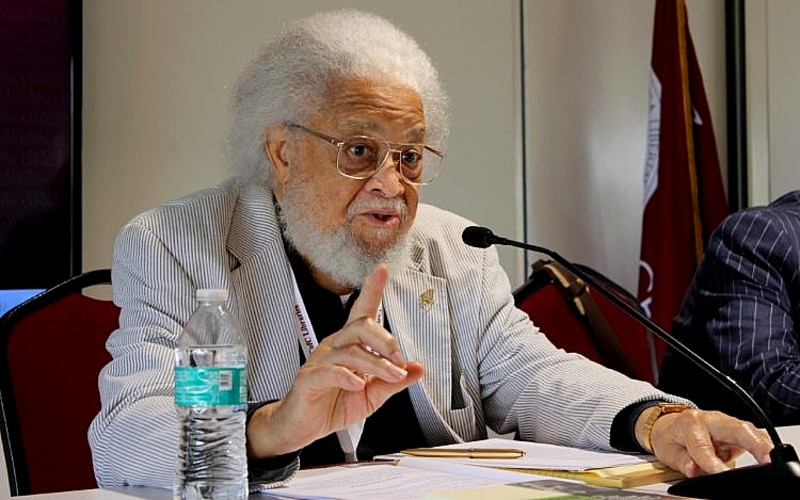

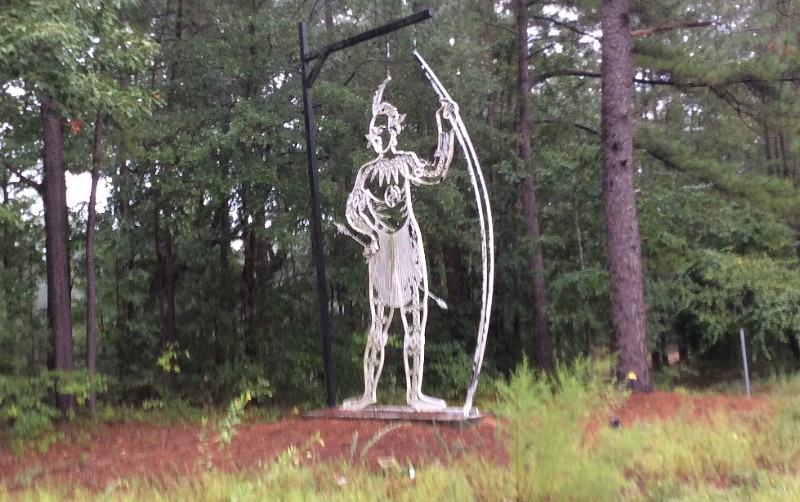
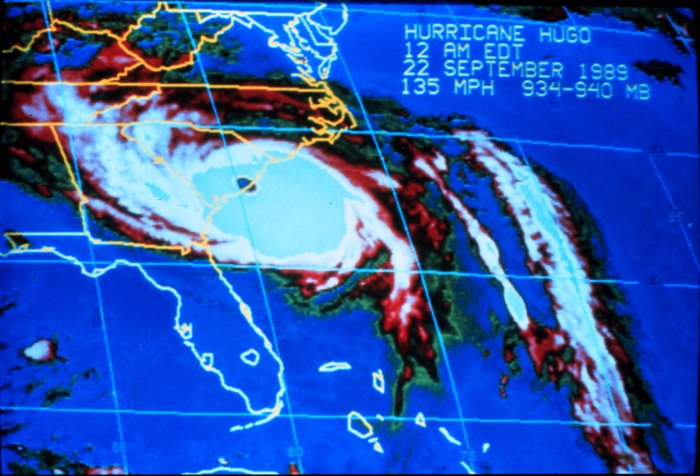


 We Can Do Better, South Carolina!
We Can Do Better, South Carolina!























